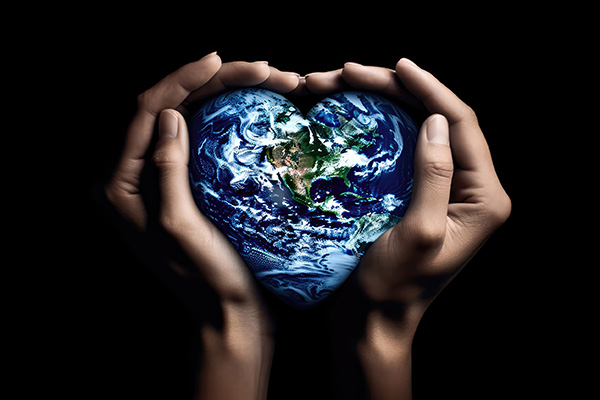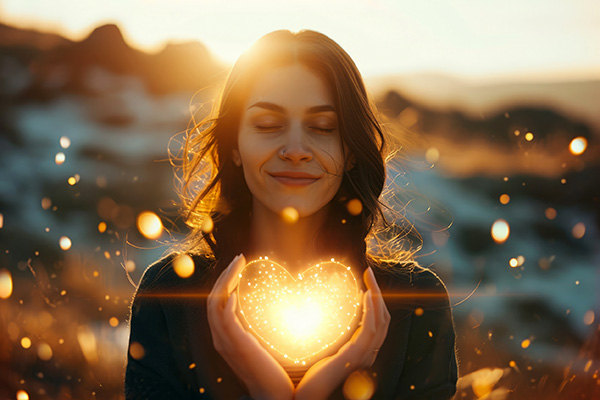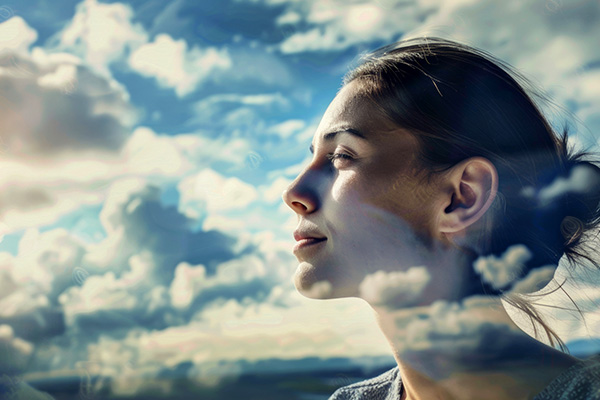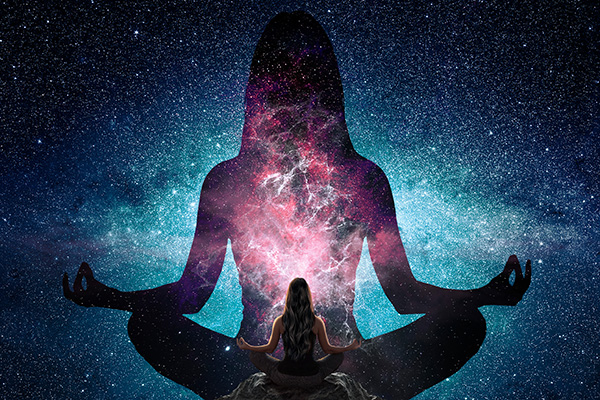higher consciousness
Spiritual Awakening ‘Turns On The Light’
 What exactly is a spiritual awakening, and is there a way you can tell if you are having one? Here are some ways to be aware of what is happening to you.
What exactly is a spiritual awakening, and is there a way you can tell if you are having one? Here are some ways to be aware of what is happening to you.
The first sign is usually when you are no longer living in a ‘dream world,’ where you used to see everything through your human ego and you were overly focused on the future and your past.
This is a clear sign that you are becoming more spiritually aware. You have a greater awareness of your individual self and the connection between that and everything else. Things start to come into better focus in your life and make more sense.
When you closely examine various religions and faith traditions, there is usually a common thread that describes this state of heightened awareness as nirvana, enlightenment, or awakening.
This new consciousness happens when you stop being the observer, and instead ask yourself, who is observing?
Many people go through life on ‘autopilot,’ because that is what they were taught, or they simply fell into a routine without giving much thought to who they really are, or what they truly need or desire to make their life meaningful.
Asking such questions about yourself is important for your personal growth and self-realization. It is ‘turning the light on’ so to speak. The first step in growth is always the awareness of the present moment followed by an impulse to change something. Continue reading
Maybe This Is How We Mend Our World
 I have certainly been trespassed against over the years, as I suspect you may have too: maligned, misunderstood, abused, betrayed. Many of us have been hurt and wounded.
I have certainly been trespassed against over the years, as I suspect you may have too: maligned, misunderstood, abused, betrayed. Many of us have been hurt and wounded.
For many of us lifetimes of pain also seem to rise to the surface now, as if this era has come to collect on both the debts and the blessings.
Some of my wounds in this lifetime occurred at a young and tender age, when there seemed to be no healing granted; when the best I could do then was retreat and lick my wounds alone. There was no wise elder at my side, no sacred ceremony to mark the grief, no balm from the spirit realms. Just the aching silence of pain, and the quiet hope that one day, perhaps, I would understand why.
Since that time so long ago, I have also seen much vindication. This ability to witness what I have called “the coming around of the going around,” hasn’t been only in seeing karmic issues resolved for little slights, but for big wounds as well.
I’ve watched as Spirit, with its own perfect timing, allowed clarity and closure to emerge…sometimes years later, sometimes through unexpected channels. There is a strange and sacred justice to the Universe that rarely moves on our schedule, but always, always moves.
Justice. Yes, always in the end. But what of forgiveness?
It all shifted for me when I came to know the ‘big picture’ in the powerful prayer, “forgive us our trespasses, as we forgive those that trespass against us.” These words are not just religious rote, but an energetic key to spiritual evolution. Continue reading
Be The Light That Darkness Cannot Touch
 The nightmare continues every day. The very thing we fear the most has come to look us right in the face, staring in our eyes. This little imp taps us on the shoulder, reminding us of all the stupid things we did, all the hurtful things, how we messed up, time after time.
The nightmare continues every day. The very thing we fear the most has come to look us right in the face, staring in our eyes. This little imp taps us on the shoulder, reminding us of all the stupid things we did, all the hurtful things, how we messed up, time after time.
We messed up time again, no one agrees with us, we are reminded that “they” are so much smarter, did things exactly right every time.
We are at a turning point. We can give up, turn, run for the hills to hide, but still there is the demon of fear lingering around the deep recesses of our mind.
Surely this little devil of fear tells us we can see how we don’t deserve to reach our dreams, or accomplish our goals.
Stand back! Truly look at everything from all sides. Become like an eagle, or an owl, or a hawk, with eyes that see far beyond the surface where the heart lies.
Try to be kind and loving. Put your mind in the thoughts of being kind, being positive, no matter how much doing so lays open our heart for others to stomp on, even though many others will think you have lost your mind.
When we try with all our hearts to do something toward our dream, with love, with pure knowledge, we are listening to spirit. Then we gain strength, we gain courage, we pass over the top of the highest mountain to reach the other side. Let this outlook enlighten your heart, mind and soul toward a new attitude, for a new beginning.
Are You Experiencing A Spiritual Awakening?
 As a psychic reader, I sometimes have clients who quietly confess that they are afraid they might be “going crazy.”
As a psychic reader, I sometimes have clients who quietly confess that they are afraid they might be “going crazy.”
In truth, they are usyally just experiencing the early signs of a spiritual awakening. These profound shifts in your awareness and energy can feel disorienting, yet are deeply meaningful.
So, how can you tell if what you’re feeling is part of a spiritual transformation rather than a personal unraveling?
The term ‘spiritual awakening’ is somewhat overused these days in metaphysical circles. Just about anyone who has a ‘woo-woo’ moment, or gains deeper insight into a situation, or suddenly sees chakra colors, seems to believe they are having a true, full-blown ‘spiritual awakening.’
Spiritual awakening does tend to occur spontaneously, and from what I’ve witnessed, the more open-minded the person is and the less attached to outcomes they are, the more available or ‘ripe’ they are for a spiritual awakening to occur.
Just the other day a client was telling me of her experience while peeling a carrot over the kitchen sink. She said she was looking down at her hands, watching them, and wondering what was animating them?
It can be a strange moment when you discover that you are not really who you thought you were. It can be disorienting, to say the least, to see yourself from such an objective position. However, if you know ahead of time that this is perfectly normal, and others have experienced these signs too, it can make your life a lot easier.
When Life Gets Hectic Find Your Way Back To Source
 Whether it manifests in your body, feelings, or spiritual well-being, stress can really knock you off balance. Many of us are all too familiar with this. It sneaks in slowly, or rushes in like a storm. Suddenly, you’re exhausted, scattered, anxious, or just not feeling like yourself.
Whether it manifests in your body, feelings, or spiritual well-being, stress can really knock you off balance. Many of us are all too familiar with this. It sneaks in slowly, or rushes in like a storm. Suddenly, you’re exhausted, scattered, anxious, or just not feeling like yourself.
When this happens, it’s as if your inner compass has been thrown off. You forget what it feels like to be centered, calm, and connected. Fortunately, there’s a beautiful and simple way back to your “true north”: meditation.
Meditation is one of those practices that has stood the test of time for a reason. It doesn’t just help us handle stress better. It helps raise our energy and bring us back into balance.
And beyond that, it can offer us something truly magical: a direct experience of our connection to the unified field of intelligence. Some people call it the void. Others call it the Source, Spirit, or simply Presence. No matter what you call it, it’s that vast, peaceful space that holds everything together, and we’re already a part of it.
I’ve personally felt the difference meditation makes in my life. But I’ll be honest: these past few weeks have been a whirlwind. So much has been going on, and in the chaos, I missed my daily meditations. And wow, did I feel it.
When I don’t take the time to realign, everything feels just a little harder. Meditation helps me feel whole. It’s like a reset button for my body, mind, and spirit. Especially with the kind of energy work and spiritual focus I need in my daily life, I rely on it to keep me grounded and in tune.

